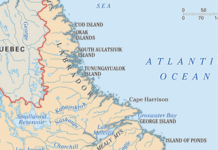GE has made three wind-related announcements in Thailand, Egypt and the Netherlands. In Thailand, the company will provide 270 MW of wind; in Egypt, it will connect an additional 120 MW of wind power to the grid; and in the Netherlands, it has sent the last set of nacelles to be shipped this year to Merkur’s offshore wind farm.
GE Renewable Energy and GE Power announced agreements to provide 270 MW of wind energy capacity to Wind Energy Holding (a member of Thailand’s KPN Group) for the Theparak Wind Farm in central Thailand. GE Renewable Energy is set to provide a total of 90 3.0-137 wind turbines with 156.5-meter hybrid towers, making them the tallest turbines it has ever installed outside of Europe, the company notes.
GE Power will supply the wind turbine’s electric drivetrain with generators and pitch motors and will also supply the collector and grid interconnection substation packages, including high-voltage switchgears, transformers, SCADA controls, telecommunications and power systems studies. The 270 MW of capacity will be installed in three phases of 90 MW each and is scheduled to begin commercial operations in 2018. The scope of the project also includes a 15-year full-service agreement between Wind Energy Holding and GE Renewable Energy.
Theparak marks GE’s largest renewable energy order in Thailand and will contribute to the country’s goal to reach 40% of renewable energy in its energy mix by 2036.
Separately, GE Power signed an agreement with the Egyptian Electricity Transmission Co. for the extension of the Gabal El Zayt gas-insulated substation, connecting an additional 120 MW of wind power to the national grid by the end of 2018.
The extension will leverage GE Power’s Grid Solutions portfolio, which includes GE’s B105 220 kV gas-insulated switchgear, in addition to medium- and low-voltage systems, control and protection systems, and auxiliary services. GE will also provide local project management, engineering, design, fabrication, the erection of power transformers, site management, testing, and commissioning services on a turnkey basis.
The Gabal El Zayt substation is the main connection point between the Gabal El Zayt wind farm and the grid. This will be the substation’s second extension; it was first commissioned in 2014 by GE. Upon completion of this extension, the substation’s total capacity will reach 540 MW, with plans to connect another 40 MW in the near future.
Separately, GE Renewable Energy has also sent the last set of nacelles to be shipped this year to Merkur’s Offshore Windfarm logistical hub in Eemshaven, the Netherlands. By the end of the month, the hub will have received 24 nacelles, 24 blades, and several other tower fragments and transition pieces. With all these component in place, local teams will perform some pre-assembly works while getting prepared for the installation phase that is set to begin mid-February 2018.
The offshore turbines have three main components – nacelles, towers and blades – that are manufactured in different locations and then shipped to Eemshaven, where they are prepared for eventual installation at sea. The nacelles are produced in Saint-Nazaire, France; the blades are made in Castellon, Spain, by LM Wind Power; and the towers are manufactured in Germany and China.
Remaining nacelles, blades and tower pieces will continue to be shipped to the Eemshaven logistical hub until mid-summer 2018. Installation of the 66 GE Haliade 150 6 MW turbines is expected to be completed by end of September 2018. The Merkur project is located approximately 35 kilometers north of the island of Borkum, Germany, in the North Sea. The 66 turbines will generate approximately 1,750 GWh annually, enough clean energy to power around 500,000 homes.




